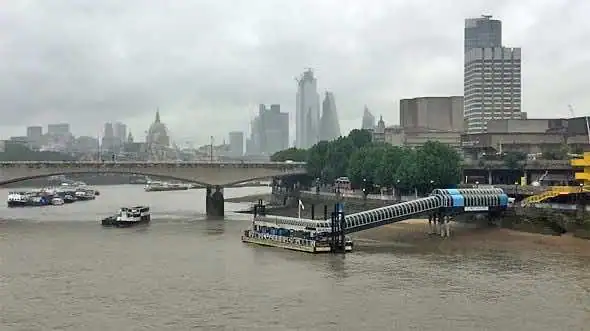
I thought I’d start this walk by sitting on a bench. That’s what I like the most about walking – sitting down. We may as well begin with a decent rest before we start. I’m sitting opposite the Houses of Parliament by Westminster Bridge, on that stretch of riverbank that runs in front of St. Thomas’ Hospital. Pick a seat down there and enjoy one of the best views of Parliament. The only view that is better than this one is from the top of the London Eye [see 1 on the map].

See if you can spot some MPs sitting on the veranda underneath that big marquee. You’re going to need supersonic eyes to see their faces, but you should be able to make out the people eating. The reason they’ve painted the marquee red and green is because red is for the Lords (the House of Lords has red leather seats inside) and the Commons’ seats are green. And they’ve replicated the colours on the bridges as well: check out Lambeth Bridge to your left – it’s red. And Westminster Bridge is green.
I think we should sit here awhile and wait until Big Ben fires his starting gun. He rings his bells every fifteen minutes so let’s just sit here until he gives us permission to leave. I can tell you about this walk while we’re waiting… It’s quite lengthy but don’t worry because I’m going to stop at least a million times along the way for a sit down and a coffee. It is totally impossible to get lost on this walk because we are just going to hug the river all the way down to Tower Bridge.
Big Ben has just sounded his bell so let’s get going…
Walk towards Westminster Bridge and use the tunnel to pass underneath the road. I don’t know about you, but I think it’s time we had another sit down, so pick a bench just past the London Eye. The chance of getting a spare bench outside County Hall is close to zero, because this little stretch is probably the busiest bit of London.
This is where everyone queues up for the London Eye, London Aquarium and London Dungeon, so it is an absolute nightmare most of the time, with a thousand people all fighting over ten benches – it’s like the world’s worst game of musical chairs.
Find a pew after the London Eye and join me for a sit down. Hopefully you should see a few boats chained up in the middle of the river and a golden eagle standing outside the Ministry of Defence. On the other side of that building is Whitehall and Downing Street. Check out that huge building at the end of Hungerford Bridge. That is Charing Cross station and it was designed to look like an ocean-going liner. Presumably the tall spires along Hungerford Bridge are supposed to be its mast. And the tourists on top are the passengers. And the river underneath is the Pacific Ocean. And we are the seagulls.

Pass underneath Hungerford Bridge and you’ll find yourself next to the Royal Festival Hall. If you enjoy a bit of classical music then this is where you can dress up in your penguin suit and enjoy a bit of culture [see 2 on the map].
There are some more cafes and restaurants down here so you might want to stop for another sit down and a drink (is this the laziest walk you’ve ever been on? We’ve only been going for half-a-mile!). You can have a look at Cleopatra’s Needle over the other side of the water while you’re resting. Believe it or not that Egyptian obelisk is the oldest thing in London, and it was over 1,500 years old before the Romans invaded England – imagine that. Even the Romans would have looked at that and thought that it was ancient (but of course it was still in Egypt back then, covered up in sand).
If you hear some cracks coming out of the office blocks behind you then it will probably be the teenagers skateboarding on the ramps. There is a little underground area here that’s been set aside for London’s next generation of hoodlums, all spray-painted in graffiti. You can stand here and watch them doing stunts on their bikes if you like.
After that comes Waterloo Bridge. If you ever get a sightseeing river cruise then the guide will inevitably tell you that Waterloo Bridge is nicknamed the Lady’s Bridge, because it was built by the women during World War II. But I have never heard anyone call it the Lady’s Bridge in my life – not even by the ladies.
The rest of the river from this point on (I’m looking at the opposite bank) will be a mix of great buildings and awful buildings all bundled up together without rhyme or reason. You can thank our German friends in the Luftwaffe for that. Whenever you see a modern building standing next to an old one then you can bet your life that the Germans bombed it. Check out Somerset House next to Waterloo Bridge – the Strand used to be full of big mansions like that, but now it’s dotted with office blocks and Lego-like monstrosities. Maybe we should invite the Germans back so they can knock them all down again.
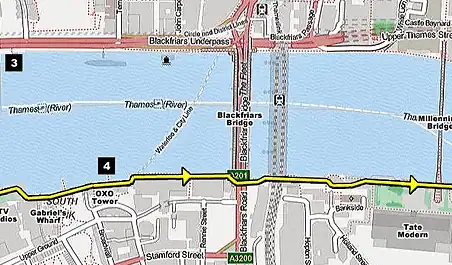
Once you’ve passed the National Theatre St. Paul’s should be coming into view in the distance… but I’m going to give you a little test first. This next object is not easy to find so you’ll need to stretch your eyes. Just before you get to Gabriel’s Wharf have a look over the other side of the river for a concrete arch on the riverbank. If you peer through the leafy trees then hopefully you’ll be able to see a silver dragon by the road (you will need amazing eyes) [see 3 on the map]. That marks the start of London – the real London – the City of London – as opposed to the City of Westminster. So everything that you see on the opposite bank from here on up to Tower Bridge is situated inside the old capital city. Obviously we consider London to be a lot larger these days, but that area is the real deal. And the land that you and I are standing on is still outside it, because the City of London never extended across to the south bank.
Before we get to Gabriel’s Wharf keep your eyes open for a white building with blacked-out windows. It might look a bit rubbish from the outside but that’s actually the ITV Studios in there, and they do some of their news and breakfast shows looking through those windows. So if you stand outside and jump up and down then maybe you’ll end up on the telly (next stop Hollywood!).
You might want to stop for another cup of tea in Gabriel’s Wharf because amongst the ramshackle looking buildings are a couple of nice open-air cafes. You can enjoy listening to the plastic tumblers and Coke cans sloshing up against the canal-side wall as well – I love the sound of waves crashing up against the embankment. Personally I would carry on walking for another minute and try the coffee shop underneath the OXO Tower (I spend half my life in coffee shops) [see 4 on the map].
The next bridge coming up is Blackfriars but before we get there check out those fantastic buildings on the other side of the river – the white one with a sloping green roof and the brown brick building next to it. How great are they? The white one is where Winston Churchill used to go to school, and I believe the brown brick one is full of theology books (it’s a religious library). I haven’t got a clue what that curved building is on the other side – I think it’s just a financial institution.
If you’re wondering what those big red pylons are sticking out of the water then they are all that remains of the original bridge. After they built the new bridge next door they discovered that they couldn’t remove the pylons in case they messed up its foundations.
After Blackfriars comes Tate Modern and the Globe Theatre – two of London’s most popular attractions. Tate Modern used to be an old power station and I’m campaigning to fire it up again and burn all the pictures (I hate modern art). You can also enjoy a semi-decent view of St. Paul’s over the other end of the Millennium Bridge. You might even be able to see some brave people walking around on the exterior balconies. The City skyscrapers look really good from here – you can see the Cheesegrater (the triangle) and the Walkie Scorchie (the curved one)… but where’s the Gherkin? We’ll have to walk a little further along before that one comes into view. Check out that level at the top of the Walkie Scorchie, underneath the roof… believe it or not there’s a tropical garden with palm trees up there, and I definitely recommend giving it a try (read my review for the Sky Garden – it’s free to get inside).
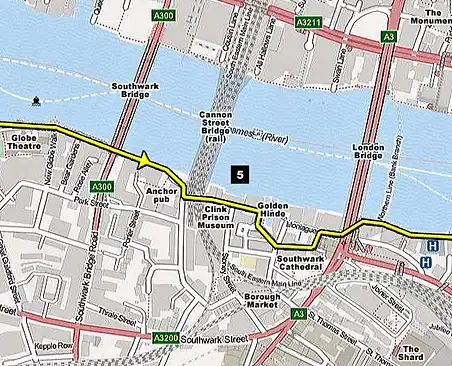
The next two bridges are a bit boring to look at – Southwark Bridge and Cannon Street rail bridge, but once you pass the Anchor pub we’ll be heading into one of my favourite sections of the walk. We’ll have to leave the water for a while and pass underneath a dark arch, but it will eventually take us past the spooky Clink Prison and the remains of Winchester Palace (which sounds a lot more impressive than it actually is) [see 5 on the map].
After that comes a big surprise… if you don’t already know what’s coming up then this will be a treat. It’s an exact replica of Francis Drake’s pirate boat in which he circumnavigated the globe – the Golden Hinde. Just have a look at the size of that thing and then wonder how he sailed it around the equator – it’s tiny! I wouldn’t even fancy sailing down the Thames in it.
There are a few more coffee shops dotted around here so you might like to have another rest, or maybe you can have something to eat in Borough Market instead, but whatever you decide to do you’ll have to walk a little inland past Southwark Cathedral. The side roads are very twisty and turny around here and it’s extremely easy to get lost (I bet you 10p that you will get lost), but all you’ve got to do is find London Bridge and rejoin the riverside path there.
A word of advice: if you find yourself walking underneath the road bridge then stop! Find the stairs next to it and climb above it. Then find the stairs back down to the riverside. If you do walk underneath the bridge then you won’t be able to rejoin the water until Hay’s Galleria.
London Bridge itself is quite bland, but it marks the spot where the first bridge stood. It’s also where you’ll find The Shard, but unfortunately you won’t be able to see it from this side of the Thames because it towers up behind the buildings. Tourists are forever mixing London Bridge up with Tower Bridge, and I’ve even given people directions to “London Bridge” when I knew full well that they wanted Tower Bridge – imagine their disappointment when they clapped eyes on this one!
See if you can spot The Monument on the opposite bank… it’s that tall stone column with a golden urn on top, hiding amongst the office blocks.
The Monument stands a very short distance from Pudding Lane where the Great Fire of London took hold. Fortunately we’re totally safe over here because the fire only made it halfway across the old London Bridge before they got it under control. So we could have stood here in 1666 and watched the entire city burning (although the inferno heat and sparks would probably have set our hair alight).
You can enjoy a better view of the Sky Garden from here and you might even be able to see a few of the plants and palm trees on the top floor. It’s like a big greenhouse.
Directly underneath that is a yellow brick building which used to be the Old Billingsgate Fish Market. That’s where Michael Caine used to work before he was Michael Caine – carrying all the fresh fish off the boats into the market behind. You might be able to see a golden fish on top of the wind vain. And we can finally get a little look at the Gherkin here too, which has been doing its best to hide from us along the entire length of the walk.

Before we get to the good stuff (you will know exactly what I’m talking about by now… because you’ll be able to see them straight ahead) spare a thought for the little ship in Hay’s Galleria. It’s worth a quick look inside just to see the funny little fountain in the middle – it’s like something out of a Jules Verne novel [see 6 on the map]. There are a few coffee shops in there as well. Or if you’re fed up of drinking coffee then there’s a nice pub called The Horniman. (You shouldn’t drink too much coffee anyway because its bad for your health – it’s much better to stick with alcohol.)
The big ship outside is called HMS Belfast – a big battle cruiser from World War II. That’s all that’s left of our Royal Navy (it’s just that and the Golden Hinde now). If Argentina invades the Falklands again then we’ll have to kick out all the tourists and fire them both up again.
The big teardrop-shaped building that looks like a motorcycle helmet is City Hall. That’s where the Mayor of London works… or doesn’t work. How can you get any work done when you’ve got a view like that out of your window?
Can you see the famous Traitor’s Gate in front of the Tower of London? It’s all bricked up now, so you’re looking for an algae-covered arch above the water line. That’s where they used to row all of the royal prisoners into the Tower to have their heads chopped off. If you were not as important as a royal then you’d be killed on Tower Hill behind… you can just about see the rise of the hill to the left of the Tower (look for the main road behind it, in front of a very tall and ornate Edwardian building) [see 7 on the map]. This is probably the only spot in London where you can fully appreciate that it’s a hill, because it looks quite flat from everywhere else.
I’ve saved the best landmark for last… find the stairs next to Tower Bridge and head up to the roadway, then walk halfway across and enjoy one of the best photo spots in London… You get a great view of City Hall and The Shard, and a good shot of the City skyscrapers as well. See if can spot Michael Caine’s fish shop and Winston’s classroom. I can’t end the walk in the middle of a bridge though… it has to be a sit down in a coffee shop. So find The Tower Hotel on the right (on the opposite side of the river) and then find the stairs back down to the ground level.
We’re heading for St. Katharine Docks behind the The Tower Hotel. This used to be part of the old port where the ships came in to offload their goods, but these days it’s just a pretty little marina full of posh yachts and places to drink. The Dickens Inn is where everybody goes… or you can just copy me and settle for Starbucks.
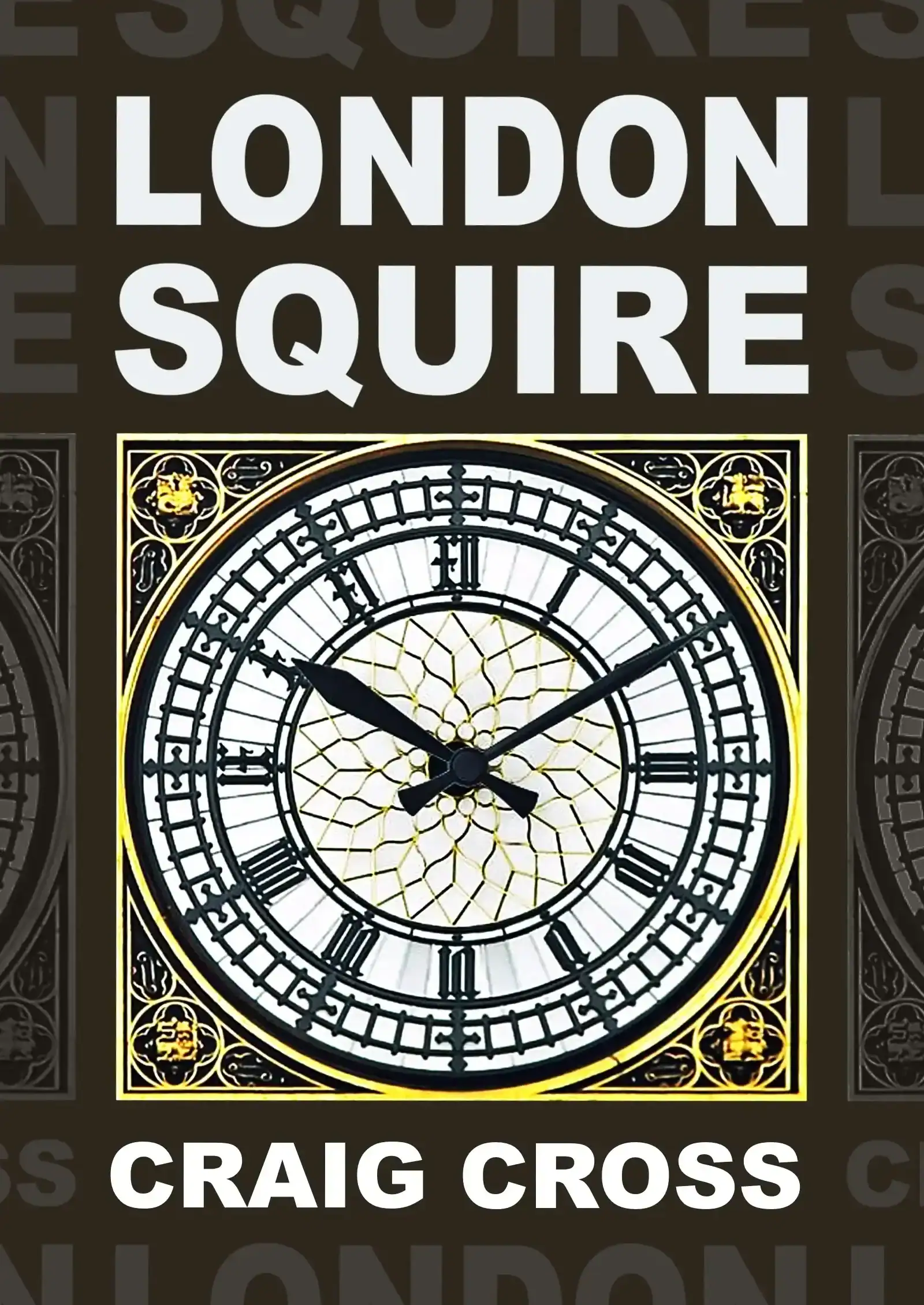 London Squire guidebook – Check out my guidebook available to buy at Amazon, Apple and Kobo. I’ve spent the last twenty years visiting London’s landmarks, attractions and hotels and collected all of my reviews, example itineraries, advice about using the buses and trains, and handy practical info into an eBook, along with 650 original photographs
London Squire guidebook – Check out my guidebook available to buy at Amazon, Apple and Kobo. I’ve spent the last twenty years visiting London’s landmarks, attractions and hotels and collected all of my reviews, example itineraries, advice about using the buses and trains, and handy practical info into an eBook, along with 650 original photographs
More things to do on the South Bank
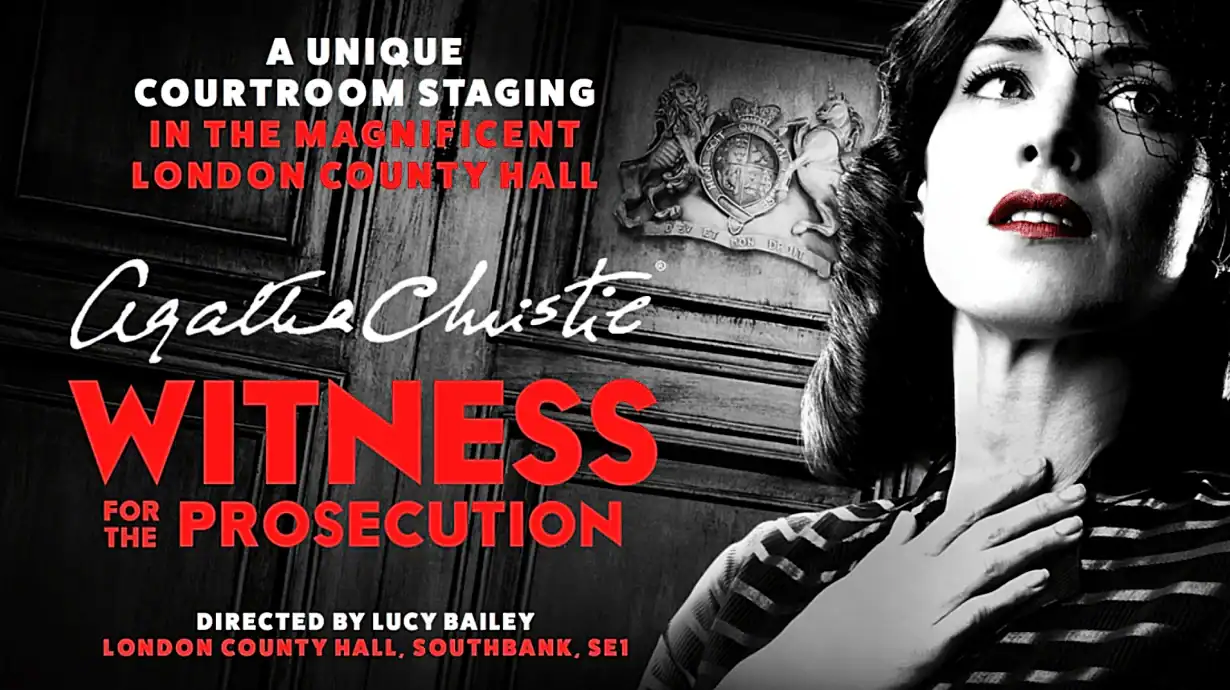
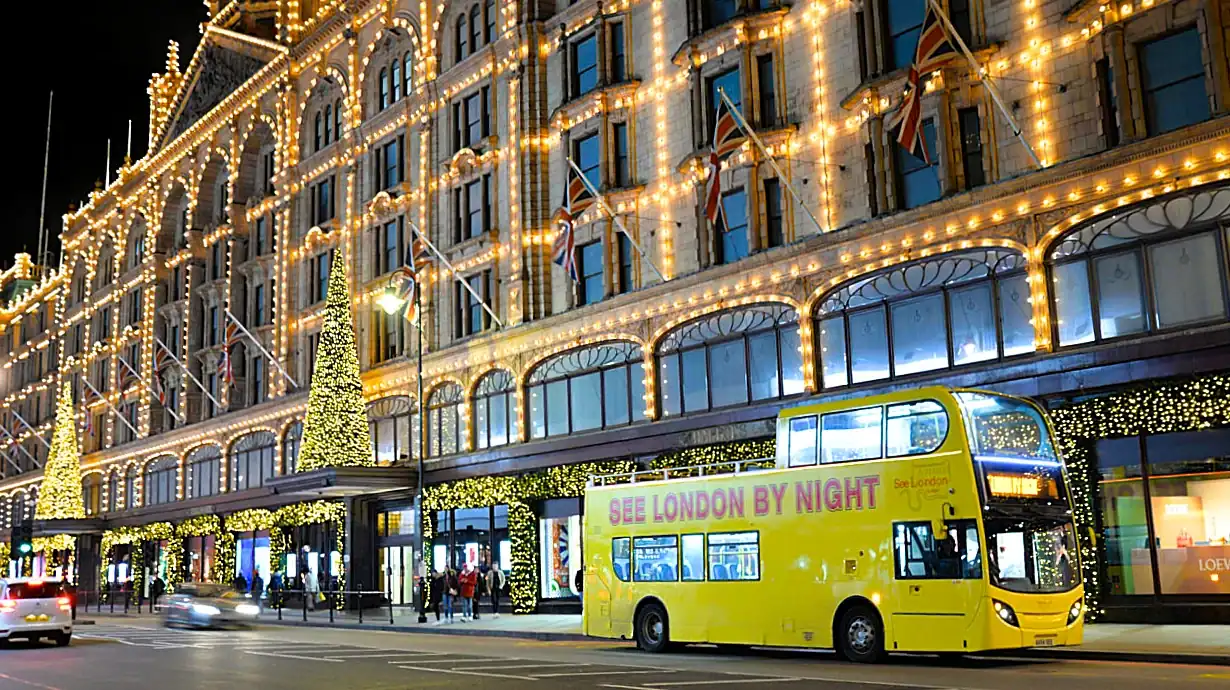
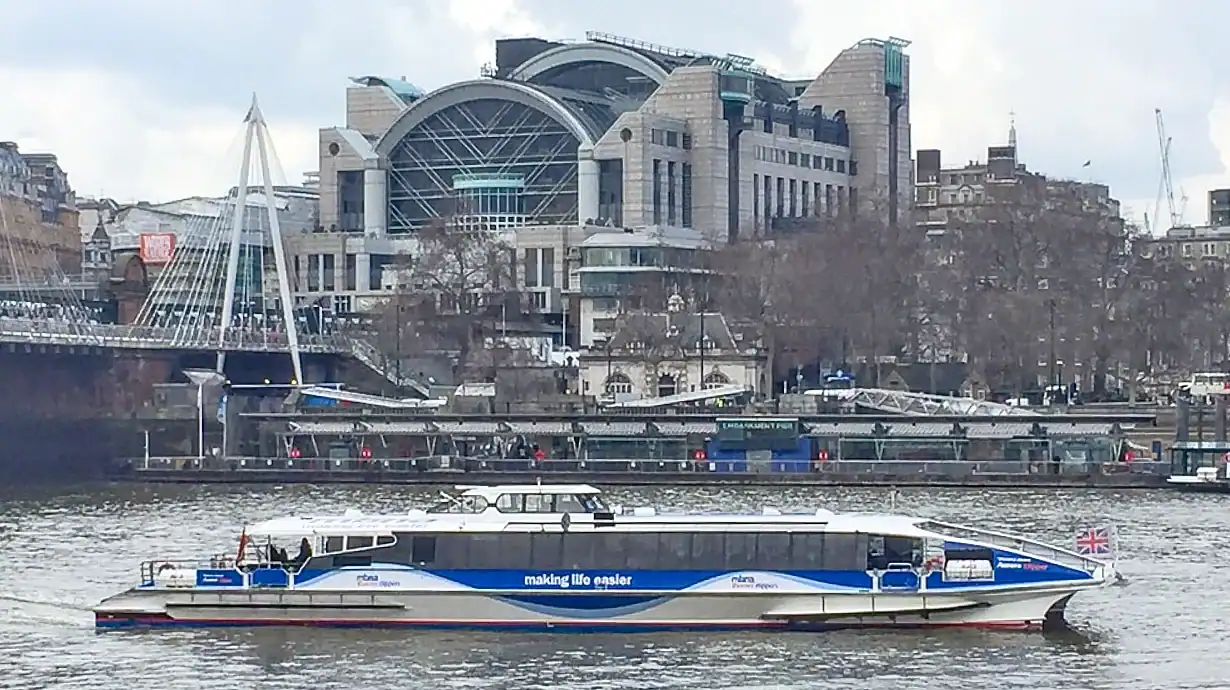
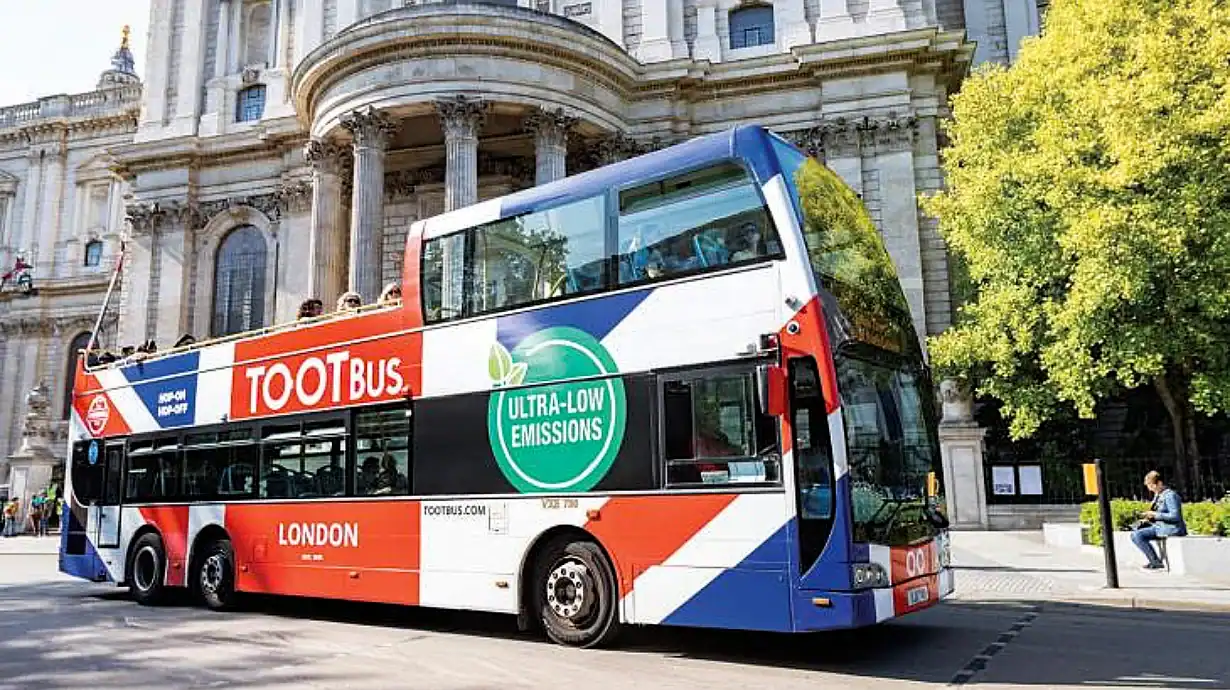
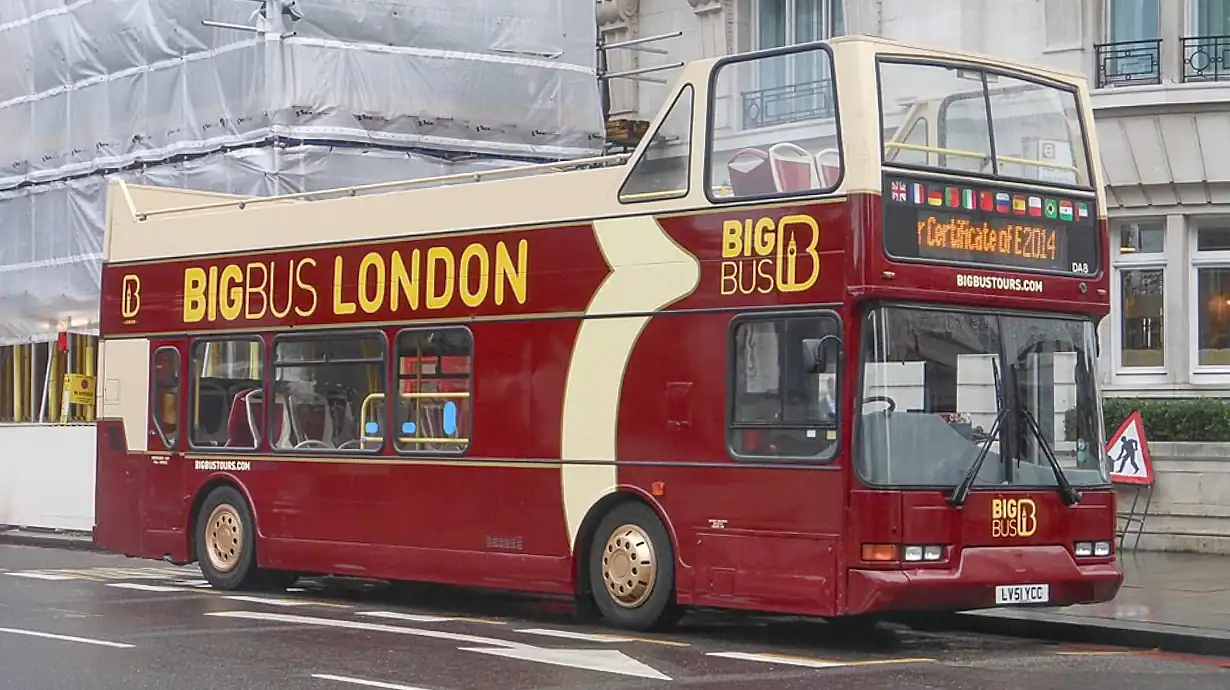

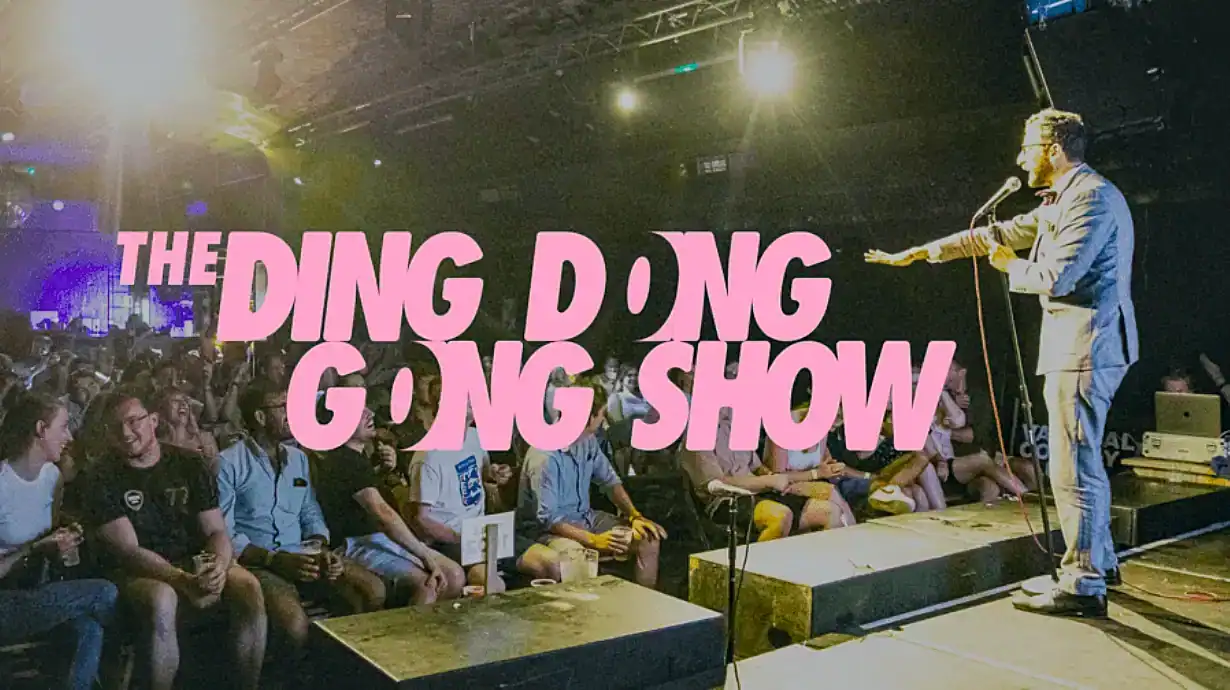

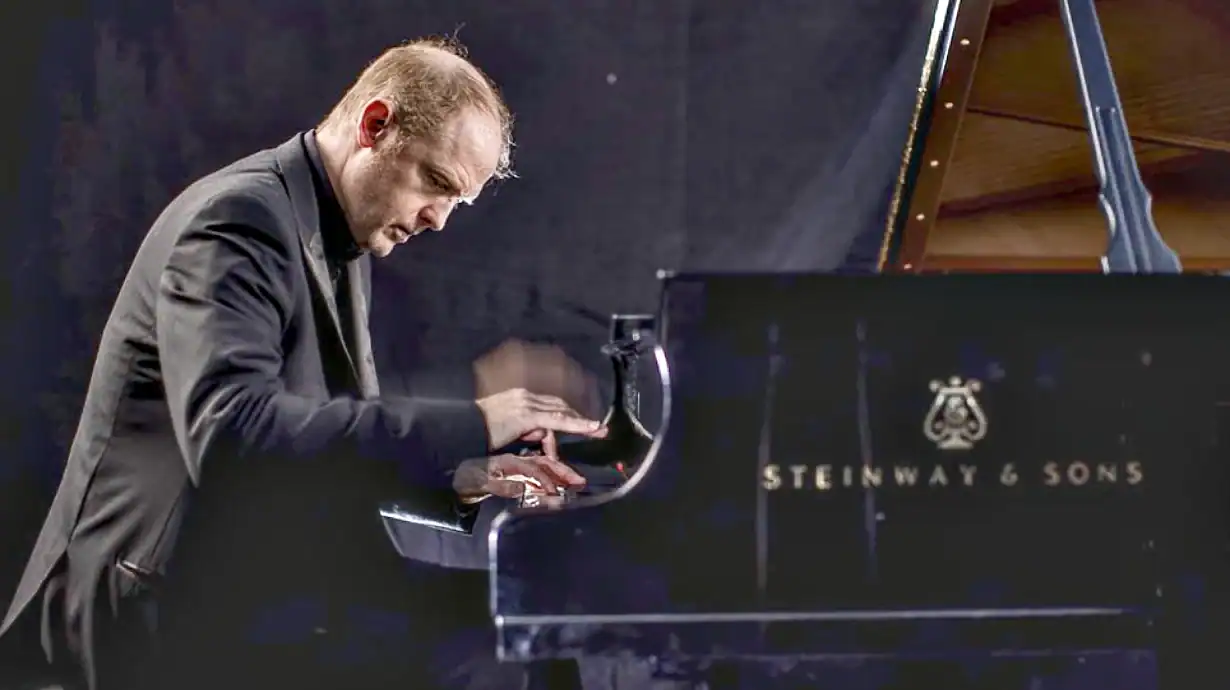


Your comments
What do you think? Share your thoughts
Be the first to talk about this
Be the first to comment (no need to register)